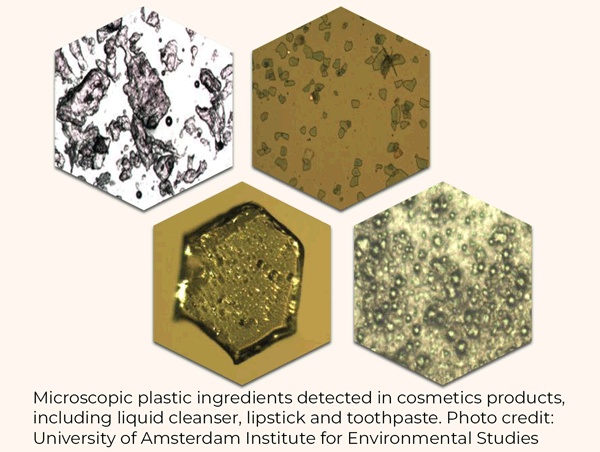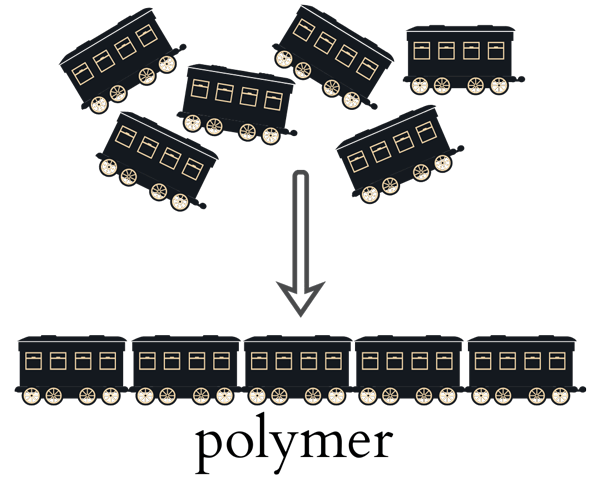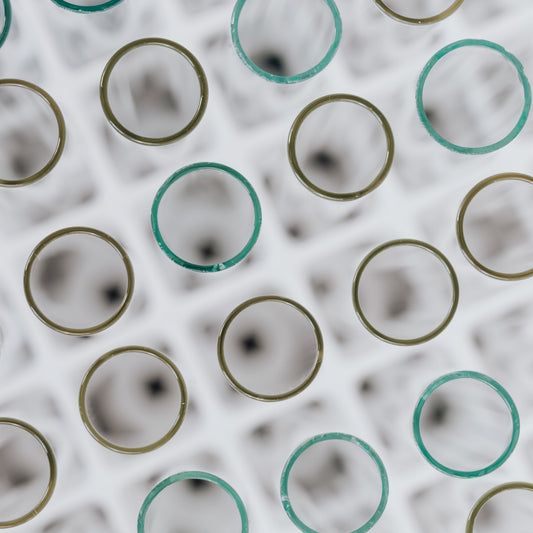
WHAT ARE MICROPLASTICS USED FOR IN COSMETICS?
When reading through ingredient lists, it is very common to come across names like hydroxyethyl acrylate, sodium acryloyldimethyl taurate or various polymers/copolymers - but are all of these microplastics?
The answer is: they may or may not be!
Read our guide for a simple explanation of a complicated topic.
As you know from our previous Lab Notes, microplastics are one of the ingredients we categorically refuse to include in our products.
Microplastics are broadly used in cosmetics, skincare, and other personal care products around the world. Although most people intuitively know that microplastics are harmful for environmental health, these ingredients can actually be difficult to identify when choosing your products.

WHAT ARE MICROPLASTICS USED FOR IN COSMETICS?
In cosmetics, microplastics are often combined with silicones and other additives to add a certain function to a formula. Depending on the type, microplastic roles include, but are not limited to:
Stabilizer, thickener, gelling agent, bulking agent, opacifying agent, emulsifier, optical blurring (i.e. making skin look smoother/filtered), smoother, exfoliator, timed release of active ingredients and fragrances, ingredient encapsulation to increase shelf life
Because of their low cost and versatility, microplastics can be found in more product types than you might expect. A common example is hydroxyethyl acrylate, which is typically used to create a gel texture in many different products, from shampoos to foundations.

WHAT ARE MICROPLASTICS?
Microplastics are very small plastic pieces, from the millimeters in size, all the way down to nanoscale. Generally speaking, plastics and microplastics are:
- Polymers*
- Synthetic (i.e. man-made)
- Created using a high heat process that locks in their shape (ex. Thermosetting)
This results in a material that is:
- Solid (i.e. not liquids)
- Not soluble in water
- Nondegradable
*WAIT, WHAT’S A POLYMER?*
A polymer (“poly” = many, “mer” = unit) is simply a molecule that is made by joining many small, similar molecules together. Think of a train as an analogy: the train is a polymer made up of many train cars put together.
ARE MICROPLASTICS A PROBLEM?
Microplastics generally enter the environment through wastewater (like when you are washing a product off your face), and appear to be easily transported from there. Microplastics have now been detected almost everywhere: in the air, our food and drinking water, aquatic and terrestrial ecosystems, and even remote polar regions.
Once in the environment, plastics and microplastics are extremely slow to decompose, to the point where scientists suggest that all of the plastic that has ever been released still exists today. These materials, and the negative effects they may cause, are expected to persist for decades and centuries.
Microplastics ecotoxicology is a relatively new field of study, and there are still many gaps in our knowledge. However, a growing body of evidence suggests that microplastics have a negative impact on a range of biological systems, from primary producers (such as algae and plants) to larger organisms (like marine animals, and possibly humans).
While larger plastic components (like packaging) can be managed through effective recycling programs, microplastics are virtually impossible to intercept. Because of their small size, microplastics cannot be captured by standard water treatment facilities, and eventually end up in a range of environments and food chains.
So the only way to protect environmental health from microplastics is to not use them in the first place.

HOW DO YOU IDENTIFY MICROPLASTICS IN PRODUCTS?
This is where it gets tricky!
You might think that identifying microplastic is easy, just look for keywords like acrylate polymer or copolymer. Unfortunately that is not the case
If you recall, we mentioned that all plastics are polymers but not all polymers are plastics. Many polymer ingredients are liquid, water-soluble, degradable, and safe for environmental health. Whether or not a polymer is biodegradable or not (i.e. a plastic) depends on its manufacturing process and molecular shape (ex. how long the polymer is).
To further complicate matters, because of ingredient naming conventions in the cosmetics industry, microplastics and non-microplastic polymers can share the same name. For example, Acrylate Copolymer can be either plastic or non-plastic, depending on their production process
Unfortunately, there is no way to tell just from seeing it on a product’s ingredients list.
SO WHAT CAN YOU DO TO KEEP MICROPLASTICS OUT OF YOUR SKINCARE, THE ENVIRONMENT, AND YOUR BODY?
-
1.
Where similar ingredient names are an issue, we believe that companies should be transparent about whether or not their formula contains microplastics. This information should be easy for a person to find.
For example, we specify up-front that the polymer used in our Green Tea Gel Cream is not a microplastic, and is certified as plant-based, renewable, and biodegradable
-
2.
When an ingredient’s microplastic/non-microplastic status isn’t clear, please consider emailing the company and asking.
If they are unable to answer, this is probably not a good sign.
-
3.
Go microplastic-free, and demand that companies eliminate microplastics from their products, even if it makes formulating more challenging or expensive.
Convenience for ease-of-production and long shelf-life should never trump environmental health.



